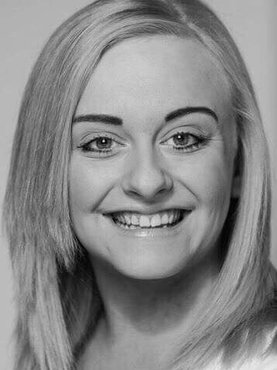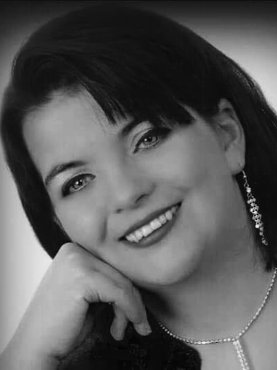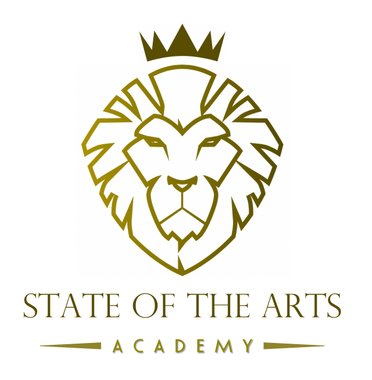STATE OF THE ARTS
A C A D E M Y
STATE OF THE ARTS: Meet The Team
UPDATED AUGUST 2018
OUR
TEAM
MICHAEL
Michael Stothard - MA, PGCE, BA HONS
Mikey began performing at a young age, passing exams in dance which he continued through to his teenage years. At the age of 18, Mikey successfully auditioned for LIPA, Mountview and GSA, but remained in Hull to pursue a teaching career.
Whilst studying A-Level Dance, Drama and Performing Arts, Mikey worked for Northern Theatre School as a musical theatre teacher, directing various productions in venues across the city. In 2013, Mikey graduated from Hull School of Performing Arts with a BA Hons degree in Musical Theatre. Mikey was Head of Musical Theatre at the Richard Green Academy from 2013 - 2014. During his time there he directed productions of Hairspray, Fame, Rock of Ages and Spelling Bee to name a few. In this time he also gained a PGCE, working in an array of secondary schools in the area. Park Street Performing Arts Centre was established in September 2014 and Mikey was appointed as Principal until his departure in 2018. He directed many productions such as 9 to 5, Annie, Alice in Wonderland, Seussical, Aladdin and Children of Eden. His dance troupes excelled at national competitions winning various awards.
Performing credits include: Ren in 'Footloose', 'Sweet Charity' at Edinburgh Fringe Festival, 'White Christmas', 'GYPSY' and is currently rehearsing 'Soho Cinders' to be performed this September at Hull Truck Theatre.
Establishing State of the Arts Academy, he brings a wealth of knowledge and experience to the school that he wishes to pass on to students who come to the academy.
"It's a big step - scary, new, but all I want to do is build students' creativity and passion for the performing arts"
LEE
Lee Roberts - BA HONS
Lee began performing at the age of 6 with amateur groups at venues in Buckinghamshire and Northamptonshire, before moving to Hull in 2008. In 2011 Lee graduated with a degree in Drama and Theatre Studies. Shortly after graduating Lee worked as a freelance drama and creative writing coach in local primary schools, before becoming a founder member of Hull theatre company Theatre on the Edge. Performance credits with Theatre on the Edge include Jack in ‘On the Edge’, Snout in ‘A Midsummer Night’s Dream’ and real-life 1800’s doctor Charles Edward Smith in ‘The Last Leviathans’ in Hull and Grimsby.
Lee designed costumes and wigs for ‘Film Noir’ a site-specific performance at The Piper Club as part of the original Hull Assemble Fest. Lee has performed in productions of ‘Me and My Girl’, ‘The King & I’, and has featured roles in ‘White Christmas’, ‘GYPSY’ and ‘The Drowsy Chaperone’ with One Off Productions at both Hull New Theatre and Hull Truck Theatre. In 2014 Lee began teaching drama at the Richard Green Academy, where he directed productions of ‘Metamorphosis’, Relatively Speaking’ and ‘Sweeney Todd’. Lee was fortunate enough to obtain a place to train professionally in 2015 at the Guildford School of Acting. Shortly after, Lee worked at Park Street Performing Arts Centre teaching musical theatre, drama and singing. He directed productions of ‘Jekyll & Hyde’, ‘Urinetown’ and ‘Les Misérables’ at Hull Truck Theatre. During his three years at Park Street, Lee also designed scenery for over 20 in-house productions and costumes for a national competition dance.
JENNA
Jenna Hakeney - PGCE, BA HONS, Mezzo Soprano
Jenna has studied classical singing since the age of 9 and has had the pleasure of performing at venues such as Notre Dame Cathedral, Westminster Abbey and St Peters Basillica in Rome, as well as many solo and ensemble performances in England and beyond.
Whilst at university Jenna developed her popular vocal technique allowing her the diversity to teach and perform in a variety of vocal disciplines gaining a BA Hons in Music Performance. Jenna believes a strong grounding in core techniques to be the key to unlocking a voice to its full potential whether you are learning for fun or as part of a longer-term goal.
After completing her degree Jenna went on to gain her PGCE in secondary music education and has had a successful career as music teacher in a variety of secondary schools in the Hull area and continues to do so to this day.
Jenna has over 10 years of music curriculum and vocal teaching experience in a variety of settings and is available as a singing teacher, chorus/choir leader and music theory tutor.
JESS
Jessica Torrie - BATD, BA HONS, PGCE, QTLS
Jess studied dance for 17 years at Claire Burns School of Dance, here she competed in Scottish Championships and took part in BATD Examinations as well as performing in numerous showcases in theatres around Scotland.
She then when on to train at Stow College where she gained her NQ and HND in Musical Theatre, Performing across Glasgow in numerous productions and theatres. Later Jess attended Hull School of Performance arts where she graduated with a BA (Hons) in Musical Theatre. Jess then continued on at Hull College and received a PGCE specialising in Dance and Musical Theatre, from there Jess worked at Malet Lambert teaching drama where she successfully gained QTLS and did numerous training events in pedagogy, The Prevent Strategy, Safeguarding and much more.
Jess was a member of the prestigious Apollo Players Theatre Company in Glasgow and has performed in many of the top professional theatres in Scotland with them over the years working with industry professionals. Theatre credits include; Fame, Les Miserables, Me and My Girl, Little Shop of Horrors and 42nd Street.
Jess worked as a musical theatre teacher at Claire Burns School of Dance before moving to Hull where she where she was head of dance at RGA and later Park Street Performing Arts Centre, putting on numerous dance showcases and events and working with the musical theatre faculty on productions.
Jess currently works as a Teacher at St Annes Special School.
Training: BATD, BA(HONS), PGCE, QTLS, Prevent Strategy, Fire Safety, Safeguarding children and vulnerable adults, GDPR, Moving and Handling, TeamTeach.
JAYNE
Jayne Andersen -BA HONS In Theatre Studies with Dance, PGCE (QTLS)
Jayne is a very experienced performance teacher, former Curriculum Leader for Media and Performance and Head of Performing Arts at a local sixth form college. As well as teaching singing and musical theatre Jayne has experience in delivering the BTEC Level 3 Certificates/Subsidiary Diplomas in Dance, Music, Theatre and GCSE Drama. Jayne has had an outstanding teaching observation record for many years and has also trained many student teachers.
In addition to a degree in Theatre Studies and Dance Jayne also possess a higher-level qualification (equivalent to a Master’s Degree) in Musical Theatre Performance - FLCM. Jayne also has a PGCE in Education and qualified teacher learning status (QTLS).
In her teaching of singing Jayne implements the London College of Music examinations in both Musical Theatre and Popular Music. Jayne has had a 100% pass rate at Merit and Distinction level.
Jayne is also a GCSE Moderator/Examiner (Team Leader) for Drama and a Standards Verifier for Performing Arts.
Jayne has twenty-two years of industrial entertainment knowledge and has performed regularly as a professional singer/entertainer. In addition to her teaching Jayne enjoys writing plays and musicals, directing and supporting young people with creative projects.
WENDY
Wendy White - BA HONS
Wendy was trained in Glasgow by Maggie Cotter, singing teacher to Sharleen Spiteri of 'Texas' and Marti Pellow of 'Wet Wet Wet' to name a few!
Wendy performed with amateur companies in Scotland in productions of Bugsy Malone and Godspell before gaining a degree in Music Performance. Since moving to Hull, she has appeared in the annual BBC pantomimes and more recently joined One Off Productions and has appeared in shows such as The King & I, White Christmas and Oliver!
For the past 30 years, Wendy has been singing professionally, taking lead vocals in bands, duos, and as a solo artist.
Wendy has also broadened her horizons and worked as a Pontins Blue-coat and children's entertainer.
In 2011, Wendy joined Platform Performing Arts as a pre-school teacher, leaving in 2016 to work at Park Street Performing Arts Centre. At Park Street, Wendy worked closely with primary musical theatre, aswell as running a choir and singing therapy group.
Wendy is a licensed Kindermusic educator and is currently furthering her career as a Song Therapist. She brings a wealth of knowledge and experience to State of the Arts Academy.
SAFEGUARDING OFFICERS
Sarah Weston & Emma Whitelock!
sarah@stateoftheartsacademy.co.uk
emma@stateoftheartsacademy.co.uk
Safeguarding and Child Protection Policy
Date issued: January 2019
Review date: January 2020
Child Protection and Safeguarding Children Policy
Contents:
- Preface
- Mission Statement
- Aims
- Statement of intent
- National & Local Guidance
- Safeguarding & Promoting Welfare & Child Protection. 6.1 Safeguarding & Promoting the Welfare of Children defined 6.2 Child Protection 6.3 Significant Harm
- Who Abuses Children?
- . What is Abuse & Neglect? - Physical Abuse - Emotional Abuse - Sexual Abuse - Neglect
- Recognition of harm
- 10.Managing Disclosures of Abuse
- Records and Record Keeping
- 12.The Role of the Child Protection Co-ordinator
- 13. Seeking Consent for a Referral
- 14. Reporting Concerns or Allegations of Abuse
- 15. Making a Referral
- 16. Seeking Medical Attention
- 17.Staff & Volunteer Self Protection
- 18.Contacts
This policy is in line with the guidelines and procedures from the Hull Safeguarding Children’s Board (Accessible via: http://www.proceduresonline.com/hull/scb/)
1. Preface
Effective safeguarding arrangements in every local area should be underpinned by two key principles:
- safeguarding is everyone’s responsibility: for services to be effective each professional and organisation should play their full part; and
- a child-centred approach: for services to be effective they should be based on a clear understanding of the needs and views of children.
2. Mission Statement
State of the Arts Academy delivers professional, inclusive and affordable performing arts training for all ages and abilities.
Our aim is to provide an accessible and friendly environment where students can develop and excel in their chosen avenue of creative performing arts.
Keep strong, keep your courage, keep your pride.
3. Aims – the purpose of this policy statement is:
- To create a safe and secure environment for children
- To respond promptly to suspicions of abuse by following appropriate procedures
- To help children acquire the skills and knowledge to protect themselves
- To protect children and young people who receive State of the Arts services. This includes the children of adults who use our services
- To provide parents, staff and volunteers with the overarching principles that guide our approach to child protection.
This policy statement applies to anyone working on behalf of State of the Arts including senior managers, paid staff, volunteers, sessional workers, agency staff and students.
4. Statement of Intent
State of the Arts Academy has a responsibility to protect and safeguard the welfare of children and young people they come into contact with. The need for guidelines and procedures is important to ensure that this is done with understanding and clarity.
State of the Arts Academy will aim to protect and safeguard children and young people by;
- Valuing, listening to and respecting everyone
- Appointing a nominated child protection/safeguarding lead (Sarah Weston) and a deputy child protection/safeguarding lead (Emma Whitelock)
- Developing child protection and safeguarding policies and procedures which reflect best practice
- Using our safeguarding procedures to share concerns and relevant information with agencies who need to know, and involving children, young people, parents, families and carers appropriately
- Creating and maintaining an anti-bullying environment and ensuring that we have a policy and procedure to help us deal effectively with any bullying that does arise
- Ensuring that all staff / volunteers are carefully selected, trained and supervised as per national guidance ‘Keeping Children Safe in Education’.
- Having a Child Protection and Safeguarding Policy and Procedure and regularly reviewing and updating this, at least on an annual basis, in line with national and local policy developments
- Ensuring that all staff and volunteers are familiar with the Child Protection and Safeguarding Policy and Procedure as per State of the Art’s induction process for staff and volunteers. They are expected to read and sign that they have understood the policy and are directed to the Child Protection Co-ordinator (Sarah Weston / Emma Whitelock)) if they have any queries.
- Ensuring that staff / volunteers attend appropriate Safeguarding Training.
- Assessing the risk that children and young people may encounter and taking steps to minimise and manage this by ensuring that staff/volunteers refer to the Child Protection and Safeguarding Policy and Procedure.
- Ensuring that the Child Protection and Safeguarding Policy and procedures are disseminated to parents. The Child Protection and Safeguarding Policy is on State of the Arts website
- Letting parents, carers, children and young people know how to report concerns about a child, young person, staff member or volunteer or complain about anything that they are not happy about.
5. National and Local Guidance
This Child Protection and Safeguarding Policy and Procedure should be read in conjunction with the Local Safeguarding Children Board (LSCB) Guidelines and Procedures (accessible via: http://www.proceduresonline.com/hull/scb/).
Everyone who works with children - including teachers, GPs, nurses, midwives, health visitors, early years professionals, youth workers, police, Accident and Emergency staff, paediatricians, voluntary and community workers and social workers - has a responsibility for keeping them safe. (Working Together to Safeguard Children, 2013)
The following national guidance should also be referred to:
- Working Together to Safeguard Children (HM Government 2015)
- Keeping Children Safe in Education (HM Government 2016)
- The Children Act (1989)
- The Children Act (2004).
- Information Sharing: Guidance for practitioners and managers. HM Government (2015)
- What To Do If You’re Worried A Child Is Being Abused (DfE:2015)
- Safe Working Practice for Adults who Work with Children (2015)
6. Safeguarding, Promoting Welfare and Child Protection
6.1 Safeguarding and promoting the welfare of children are defined as:
- Protecting children from maltreatment.
- Preventing impairment of children’s health or development;
- Ensuring that children are growing up in circumstances consistent with the provision of safe and effective care; and
- Undertaking that role so as to enable those children to have optimum life chances and to enter adulthood successfully.
6.2 Child Protection
Part of safeguarding and promoting welfare. This refers to the activity that is undertaken to protect specific children who are suffering, or are likely to suffer, significant harm. Anyone who has not yet reached their 18th birthday- The fact that a child has reached 16 years of age, is living independently or is in further education, is a member of the armed forces, is in hospital or in custody in the secure estate, does not change his/her status or entitlements to services or protection.
6.3 Significant Harm
Some children are in need because they are suffering, or likely to suffer, significant harm. The concept of significant harm is the threshold that justifies compulsory intervention in family life in the best interests of the child and gives the Local Authority a duty to make enquiries to decide whether they should act to safeguard or promote the welfare of a child who is suffering, or likely to suffer, significant harm.
7. Who Abuses Children?
Children may be abused in a family or in an institutional or community setting; by those known to them or, more rarely, by a stranger for example, via the internet. They may be abused by an adult or adults or another child or children
8. What is Abuse and Neglect?
Abuse and neglect are forms of maltreatment of a child. Child refers to anyone under the age of 18. Somebody may abuse or neglect a child by inflicting harm, or by failing to act to prevent harm.
- PHYSICAL ABUSE: Physical abuse may involve hitting, shaking, throwing, poisoning, burning or scalding, drowning, suffocating, or otherwise causing physical harm to a child. Physical harm may also be caused when a parent or carer fabricates the symptoms of, or deliberately induces, illness in a child.
- EMOTIONAL ABUSE: Emotional abuse is the persistent emotional maltreatment of a child such as to cause severe and persistent adverse effects on the child’s emotional development. It may involve conveying to children that they are worthless or unloved, inadequate, or valued only insofar as they meet the needs of another person. It may include not giving the child opportunities to express their views, deliberately silencing them or ‘making fun’ of what they say or how they communicate. It may feature age or developmentally inappropriate expectations being imposed on children. These may include interactions that are beyond the child’s developmental capability, as well as overprotection and limitation of exploration and learning, or preventing the child participating in normal social interaction. It may involve seeing or hearing the ill-treatment of another. It may involve serious bullying (including cyberbullying), causing children frequently to feel frightened or in danger, or the exploitation or corruption of children. Some level of emotional abuse is involved in all types of maltreatment of a child, though it may occur alone.
- SEXUAL ABUSE: Sexual abuse involves forcing or enticing a child or young person to take part in sexual activities, not necessarily involving a high level of violence, whether or not the child is aware of what is happening. The activities may involve physical contact, including assault by penetration (for example, rape or oral sex) or non-penetrative acts such as masturbation, kissing, rubbing and touching outside of clothing. They may also include non-contact activities, such as involving children in looking at, or in the production of, sexual images, watching sexual activities, encouraging children to behave in sexually inappropriate ways, or grooming a child in preparation for abuse (including via the internet). Sexual abuse is not solely perpetrated by adult males. Women can also commit acts of sexual abuse, as can other children
- NEGLECT: Neglect is the persistent failure to meet a child’s basic physical and/or psychological needs, likely to result in the serious impairment of the child’s health or development. Neglect may occur during pregnancy as a result of maternal substance abuse. Once a child is born, neglect may involve a parent or carer failing to:
- provide adequate food, clothing and shelter (including exclusion from home or abandonment);
- protect a child from physical and emotional harm or danger;
- ensure adequate supervision (including the use of inadequate care-givers); or
- ensure access to appropriate medical care or treatment.
It may also include neglect of, or unresponsiveness to, a child’s basic emotional needs.
This is not an exhaustive list and it must be recognised that it is not the role of staff / volunteers to make an assessment of whether children or young people have suffered harm. Staff / volunteers / child protection co-ordinator do have a duty to report any concerns about harm in accordance with the Local Safeguarding Children Board, Guidelines and Procedures.
9. Recognition of Harm
The harm or possible harm of a child may come to your attention in a number of possible ways;
A. Information given by the child, his/her friends, a family member or close associate.
B. The child’s behaviour may become different from the usual, be significantly different from the behaviour of their peers, be bizarre or unusual or may involve ‘acting out’ a harmful situation in play.
C. An injury which arouses suspicion because; - It does not make sense when compared with the explanation given.
- The explanations differ depending on who is giving them (e.g., differing explanations from the parent / carer and child).
- The child appears anxious and evasive when asked about the injury.
D. Suspicion being raised when a number of factors occur over time, for example, the child fails to progress and thrive in contrast to his/her peers.
E. Contact with individuals who pose a ‘risk to children’. This can be someone who has been convicted of an offence listed in Schedule One of the Children and Young Person’s Act 1933 (Sexual Offences Act 2003), or someone who has been identified as continuing to present a risk to children.
F. Substance Misuse – the potential for a child to be harmed as a result of the excessive use of alcohol, illegal and controlled drugs, solvents or related substances may occur during a young person’s life. The use of drugs or other substances by parents or carers does not in itself indicate child neglect or abuse, and there is no assumption that a child living in such circumstances will automatically be considered under the child protection procedures. It is important to assess how parental substance use impacts upon the children or young people in the family.
G. Mental Health – Mental illness in a parent or carer does not necessarily have an adverse effect on the child or young person but it is important to assess its implications for any children involved in the family. The adverse effects of parental mental illness on the child are less likely when parental problems are mild, last for a short period of time, are not associated with family disharmony, and where there is another parent or family member who can respond to the child’s needs and offer protection. Where mental illness is accompanied by problem alcohol use, domestic violence or associated with poverty and social isolation, children are particularly vulnerable. The potential impact of a parental mental illness and the child’s ability to cope with it is related to age, gender and individual personality.
H. Domestic Violence – The Home Office (2009) defines domestic violence as ‘Any incident of threatening behaviour, violence or abuse (psychological, physical, sexual, financial or emotional) between adults who are or have been intimate partners or family members, regardless of gender or sexuality’ Domestic violence affects both adults and children in the family. Children and young people can suffer directly and indirectly if they live in a household where there is domestic violence. It is likely to have a damaging effect on the health and development of children. The amendment made in section 120 of the Adoption and Children Act 2002 to the Children Act 1989 clarifies the meaning of harm to include, for example, impairment suffered from seeing or hearing the ill-treatment of another. This can include children witnessing violence in the home.
Domestic violence has an impact in a number of ways:
- It can pose a threat to the physical well-being of an unborn child, if a mother is kicked or punched.
- Children may suffer injuries as a result of being caught up in violent episodes.
- Children become distressed by witnessing the physical and emotional suffering of a parent.
- The physical and psychological abuse suffered by the adult victim can have a negative impact upon their ability to look after their children.
- The impact of domestic violence is exacerbated when the violence is combined with problematic alcohol or drug use.
- People working with children should also be alert to the frequent inter-relationship between domestic violence and the abuse and neglect of children.
I. Bullying – This can be defined as deliberately hurtful behaviour, usually repeated over a period of time, where it is difficult for those bullied to defend themselves. It can take many forms, but the three main types are physical (e.g., hitting, kicking, theft), verbal (e.g., racist or homophobic remarks, threats, name calling) and emotional (e.g., isolating an individual from activities and social acceptance of their peer group). The damage inflicted by bullying (including bullying via the internet) can frequently be underestimated. Bullying can be through the use of electronic communication, e.g., text or social network sites, and is commonly known as cyberbullying. Bullying can cause considerable distress, to the extent that it can affect health and development and at the extreme significant harm. All settings in which children are provided with services or are living away from home should have in place rigorously enforced anti-bullying strategies.
J. Female Genital Mutilation - This is against the law yet for some communities it is considered a religious act and cultural requirement. Therefore, if it is carried out either within the UK or arrangements are made for the child to go abroad, with the intention of having this procedure, the school have a duty to inform either the police or Children’s Social Care. Similarly if staff become aware that this procedure has been carried out, following a direct disclosure for a young person, then there is a legal duty to inform the police, as soon as possible under the Serious Crime Act 2015.
K. Child Sexual Exploitation (CSE) - Child sexual exploitation is a form of child sexual abuse. It occurs where an individual or group takes advantage of an imbalance of power to coerce, manipulate or deceive a child or young person under the age of 18 into sexual activity (a) in exchange for something the victim needs or wants, and/or (b) for the financial advantage or increased status of the perpetrator or facilitator. The victim may have been sexually exploited even if the sexual activity appears consensual. Child sexual exploitation does not always involve physical contact; it can also occur through the use of technology. The presence of any significant indicator for sexual exploitation should trigger a referral to Children's Social Care Access & Assessment team.
Significant indicators:
- Having a relationship of concern with a controlling adult or young person (this may involve physical and/or emotional abuse and/or gang activity) · Entering and/or leaving a vehicle driven by an unknown adult
- Possessing unexplained amounts of money, expensive clothes, or other items
- Frequenting areas known for risky activities
- Being groomed or abused via the internet and mobile technology and,
- Having unexplained contact with hotels, taxi companies, and fast food outlets Refer to HSCB guidance for practitioners
L. Radicalisation and Extremist Behaviour - At State of the Arts, we assist our children to become more resilient to the messages of violent extremists through creating an environment where all young people learn to understand others, value and appreciate diversity and develop skills to be able to debate. Through the balanced curriculum we offer we will help young people to learn and explore the values of different faiths in cultures. Where a member of staff has concerns regarding radicalism or extremist behaviour, they must inform the Child Protection Co-ordinator who will refer the concern to either Access & Assessment or Humberside Police.
M. Honour Based Violence (HBV) Honour Based Violence is a crime or incident which may have been committed to protect or defend the honour of the family or community. If is often linked to family members or acquaintances who mistakenly believe someone has brought shame on their family or community by doing something that is not in keeping with the traditional beliefs or culture At State of the Arts, we take HBV crime very seriously and deal with cases sensitively and confidentially. To this end we work collaboratively with external agencies to keep children and young people safe from harm. n) Forced Marriages A forced marriage is a marriage in which one or both spouses do not (or, in the case of children and some adults at risk, cannot) consent to the marriage and duress is involved. Duress can include physical, psychological, financial, sexual and emotional pressure. If concerns are brought to the attention of staff at State of the Arts, they will be reported immediately to the appropriate authorities.
N. SEND We are inclusive and recognise that SEND children have exactly the same human rights to be safe from abuse and harm as non-SEND children. We actively try to remove any barriers to learning and participation that may disadvantage children. We acknowledge that children with SEND are especially vulnerable to all types of abuse and are statically more likely to be targeted due to difficulties they may face in communicating what is happening to them. Therefore, we ensure that SEND children are responded to carefully when they have, or show signs of concern. We feel it is particularly important that all staff and volunteers are fully informed and adequately trained in order to protect vulnerable groups.
10. Managing Disclosures of Abuse
If a child discloses abuse it is important that, as far as possible, the following basic principles are adhered to;
- Listen to what the child has to say with an open mind.
- Do not ask probing or leading questions designed to get the child to reveal more.
- Never stop a child who is freely recalling significant events.
- Make note of the discussion, taking care to record the timing, setting and people present, as well as what was said.
- Do not ask children to write a statement.
- Never promise the child that what they have told you can be kept secret. Explain that you have responsibility to report what the child has said to someone else.
- THE CHILD PROTECTION CO-ORDINATOR MUST BE INFORMED IMMEDIATELY.
11. Records and Record Keeping
Records should be kept;
- When there are concerns about the welfare of child
- When there is suspicion of significant harm to a child
Specific sensitive information about individual children is kept in locked conditions by the CPCo and is only shared with staff who are directly involved.
12. The Role of the Child Protection Co-ordinator
Where there are concerns about the welfare of any child or young person all staff / volunteers have a duty to share those concerns with the designated Child Protection Co-ordinator.
The Child Protection Co-ordinator is Sarah Weston. The Deputy is Emma Whitelock.
The CPC is responsible for:
- Monitoring and recording concerns about the well-being of a child or young person.
- Making referrals to the Local Authority Children’s Services.
- Liaising with other agencies.
- Arranging training for staff / volunteers.
The Child Protection Co-ordinator, after receiving a referral, will act on behalf of State of the Arts in referring concerns or allegations of harm to Local Authority Children’s Social Care or the Police Protecting Vulnerable People Unit.
If the Child Protection Co-ordinator is in any doubt about making a referral it is important to note that advice can be sought from Local Authority Children’s Social Care. The name of the child and family should be kept confidential at this stage and will be requested if the enquiry proceeds to a referral.
The Child Protection Co-ordinator may share limited information on a need to know basis amongst the staff / management but respecting the need for confidentiality.
It is not the role of the Child Protection Co-ordinator to undertake an investigation into the concerns or allegation of harm. It is the role of the Child Protection Co-ordinator to collate and clarify details of the concern or allegation and to provide this information to the Local Authority Access & Assessment Team, or Locality POD if Children’s Social Care is already involved, whose duty it is to make enquiries in accordance with Section 47 of the Children Act 1989.
13. Seeking Consent for a Referral
Professional’s should seek in general to discuss any concerns with the family (including the child where appropriate) and where possible seek their agreement to making referrals to the Local Authority Access & Assessment Team. This should only be done where such discussion and agreement seeking will not place the child at an increased risk of significant harm.
It should be noted that parents, carers or child may not agree to information being shared, but this should not prevent referrals where child protection concerns persist. The reasons for dispensing with consent from the parents, carer or child should be clearly recorded.
In cases where an allegation has been made against a family member living in the same household as the child and it is your view that discussing the matter with the parent would place the child at risk of harm, or where discussing it may place a member of staff / volunteer at risk, consent does not have to be sought prior to the referral being made.
If you are unsure about whether to seek parental consent prior to a referral being made then seek advice from the duty social worker at the relevant Locality POD.
14. Reporting Concerns or Allegations of Abuse
A member of staff or volunteer must report any concerns or allegation of harm immediately to the designated Child Protection Co-ordinator. In the absence of the Child Protection Co-ordinator the matter should be reported to the person identified as their deputy. In the event of neither of these individuals being available the matter should be reported through the line management. In the unlikely event of management not being available the matter should be reported directly to the appropriate Local Authority Child Care Team or Police Protecting Vulnerable People Unit... In the case of it being out of hours the Immediate Help Team should be contacted/
15. Making a Referral
Referrals of all children in need, including those where there are child protection concerns will be made to;
- Hull - To Children’s Social Care (448879) – Access & Assessment Team or Police Protecting Vulnerable People Unit
- East Riding – By telephoning the Call Centre/Children’s Social Care or Police Family Protection Team
- Out of Hours – To the relevant Emergency Duty Team
All referrals made by telephone need to be followed up in writing within 48 hours.
The Child Protection Co-ordinator should make the referral as appropriate.
The referrer should be prepared, where possible, to give the following information;
- The nature of your concerns / allegation.
- Whether the child will need immediate action to ensure their safety.
- Are the parents aware of the concerns? Has consent for the referral been sought? If not, the reasons for this?
- Factual information about the child and family, including other siblings. · The nature of your involvement with the family.
- Other professionals involved with the family.
- The source of your referral, is it based on your own assessment of the needs of the child, a reported allegation or disclosure, or has the concern been reported to you by another person, if so who?
- Child’s current whereabouts and when they were last seen
- If you consider the child suffering or at risk of suffering significant harm, who is the source of that harm and their current whereabouts?
16. Seeking Medical Attention
If a child has a physical injury and there are concerns about abuse;
- If Emergency medical attention is required then this should be sought immediately by phoning for an ambulance. You should then follow the procedures for referring a child protection concern to Local Authority Children’s Social Care.
17. Staff & Volunteer Self Protection
Adherence to guidelines on self-protection for staff and volunteers working with children and young people can avoid vulnerable situations where false allegations can be made. The following guidelines are not exhaustive, and the school’s Professional Code of Conduct and Behaviour Policy should be adhered to:
- Avoid situations where a staff member or volunteer is on their own with a child.
- In the event of an injury to a child or adult, accidental or not, ensure that it is recorded and witnessed by another adult following the schools accident policy. Any recorded accidents will be entered onto the Accident Reporting spreadsheet on a weekly basis.
- Keep written records of any allegations a child makes against staff and volunteers and report in line with the Child Protection and Safeguarding Policy.
- If a child or young person touches a staff member or volunteer inappropriately record what happened immediately and inform the Child Protection coordinator.
18. Contacts
Hull Children’s Social Care (Local Authority)
- EHASH (01482) 448879
- Immediate Help Team (01482) 788080
- Child Protection Administrator (01482) 790933
- Police Public Protection Unit (01482) 307220
- Hull Safeguarding Children Board (01482) 379090
Appendix (1) Body Map








